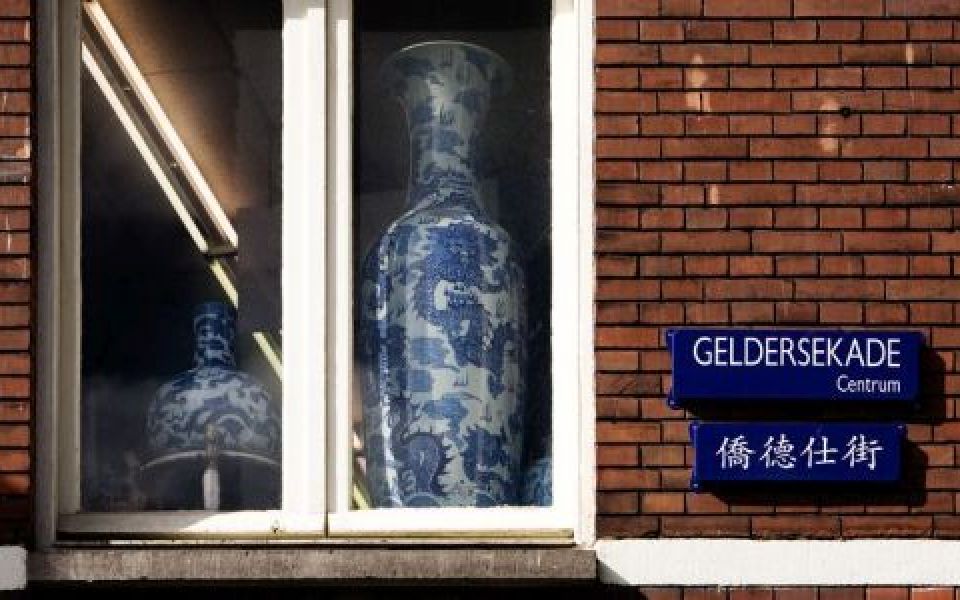Chinatown Amsterdam
Chinatown Amsterdam is unique: nowhere else in the world can you find a Chinatown where, in addition to the Chinese people, all kinds of other nationalities are located.
History of Chinatown
The arrival of the Chinese to Amsterdam in the early 20th century has its origins in maritime shipping. The first Chinese were recruited for merchant shipping by British and Dutch shipowners. At the time, wars and famine ravaged parts of China, and poor farmers, mostly from South China's Quangdong province, fled due to hunger and poverty in their homeland. During the large depression in the 1930s they were fired, but they stayed near the port in anticipation of better times. In their wake, Chinese traders came to our country and the start of the current Chinatown with boarding houses, laundries and restaurants arose in the Binnen Bantammerstraat, around the Nieuwmarkt and on the Geldersekade. After the Second World War, Chinese cuisine became popular, after which Chinatown expanded further to the Zeedijk. In addition to the eateries, travel agencies, spice shops, toko's and a print shop appeared.
Street names
The street signs in Chinatown are bilingual: Dutch and Chinese. These are not literal translations, but they do justice to the character of the concerning streets. The Nieuwmarkt, for example, is called San Kwong Cheong which means 'Nieuw Plein'. The Zeedijk is the spiritual heart of Chinatown because of the temple. The Chinese name Sin Tak Kai indicates that people's charity and good qualities are brought together here. The Stormsteeg's Chinese name is Shun Fung Lee: an increase in the yielding wind that brings speed and success.
Buddhist Temple
The Fo Guang Shan He Hua temple on the Zeedijk is the largest temple built in traditional Chinese palace style in Europe. The name means as much as 'giving us hope to be a blooming lotus flower for Buddhism in the Netherlands'. In short, the temple is called He Hua and that stands for lotus flower. The construction of the temple was made possible by financial contributions from the Amsterdam Chinese community. Construction took two years and construction workers from Taiwan came to install the special decorations and special roof tiles. The temple was officially opened on the 15th of September 2000 by Princess Beatrix (then still Queen). The Temple is inhabited and managed by an abbess and four nuns. The temple is dedicated to Guan Yin, a female representation of Buddha that symbolizes family life. Her name means 'The sage full of compassion'. Her statue is in the main hall of the temple, which is open to everyone free of charge during opening hours. You can just keep your shoes on, but respect the silence.
Chinese holidays
An important part of Chinese culture is the celebration of the traditional holidays. The holidays originally marked the breaks in China after the plowing, weeding and harvesting seasons. Below you will find an overview of some of these holidays:
- Chinese New Years
On New Year's Eve, most stores close their businesses to have dinner with family and friends. The dessert traditionally consists of candied fruits such as lotus root, lots of fresh fruit and sweet snacks. It stands for happiness and wealth and is served in a beautifully decorated bowl called 'Chien Nop' (treasure chest) in Chinese. The red bags with content that are distributed represent happiness and prosperity. The New Year's party starts on the 1st of January of the Chinese year and with loud bangs and lots of fireworks. - Moon party
According to the Chinese calendar, it is full moon every fifteenth day of the month. This is possible because the months of the Chinese year count every thirty and twenty-nine days. The moon party always takes place on the 15th of August and is celebrated with, among other things, eating special moon cakes. The moon festival is centuries old and dates from the time of the Yuan Dynasty when the Chinese people sighed under the yoke of an occupier. A ruse was used to call the people to rebellion. Notes were hidden in sweet cakes that called for resistance. On the night of August 14-15, during the full moon, rebellion broke out that led to the liberation of the Chinese people.
- All souls
Twice a year, according to the Chinese calendar in March and September (Western calendar in April and October), the Chinese commemorate their deceased relatives. They go to their ancestors' grave to make offerings and clean the gravestone. In Amsterdam on the Nieuwe Ooster cemetery is a special place where the Chinese can bury their loved ones.
- Buddha Day
Buddha's birthday is commemorated by Buddhists all over the world. Buddha Day is celebrated in the Netherlands every third Saturday in May on and around the Nieuwmarkt with religious rituals and cultural manifestations. The day starts at ten o'clock with the procession from the Fo Guang Shan He Hua temple. A replica of the large Buddha statue from the temple is carried in procession over the Zeedijk, Geldersekade and Nieuwmarkt. An important part of the day is the ceremonial cleaning. Religious cleansing of impure acts, words and thoughts by pouring water over a Buddha statue takes place on the Nieuwmarkt and is accessible to everyone.





